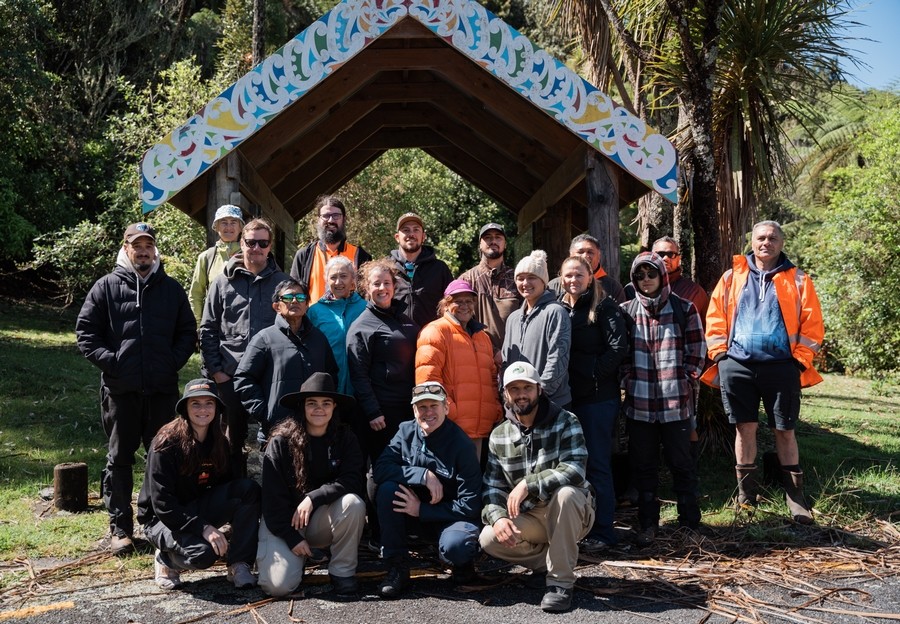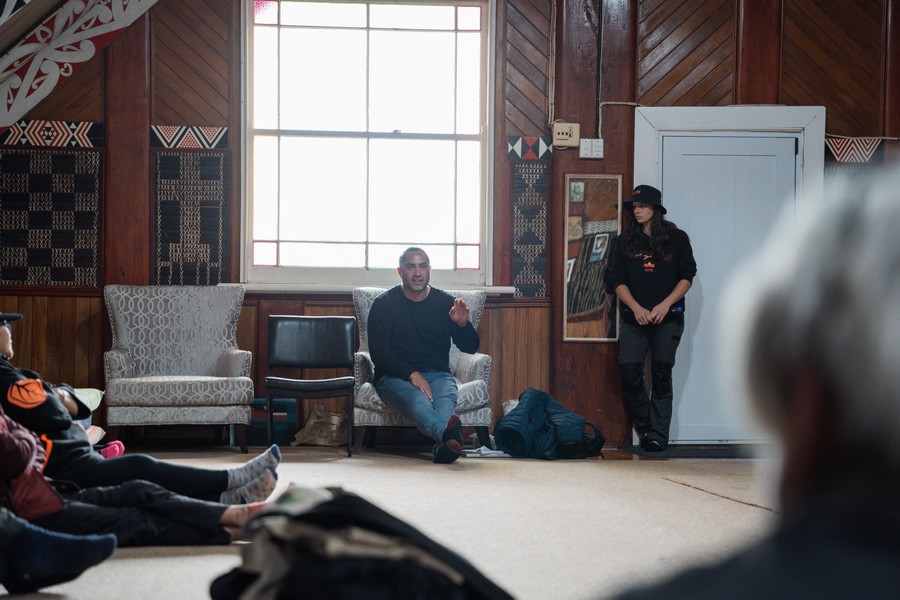Unity of Purpose: Indigenous communities and researchers unite to combat myrtle rust threat
For immediate release
3 April 2024
A new video has documented the impact that myrtle rust has on indigenous communities and the environment, reinforcing the need to maintain momentum in breeding for resistance and monitoring its spread.
Whakakotahitanga i te Kaupapa | Unity of Purpose, released today by Scion and Rotoiti 15 Trust, is a video capturing activity from a cultural exchange in November last year that aimed to discuss the challenges posed by myrtle rust in New Zealand and Australia.
![]()
Hosted in Rotorua, the exchange welcomed representatives from the Department of Agriculture and Fisheries; Queensland and New South Wales Department of Climate Change, Energy, the Environment, and Water; the University of Tasmania; the Butchulla Nation (K’gari Queensland); the Gumbaynggirr Nation (Coffs Harbour, New South Wales) and the Bundjalung Nations (New South Wales).
It offered a unique opportunity for cultures and researchers on both sides of the Tasman to connect and learn from each other. The eight-day visit highlighted the importance of sharing traditional knowledge and Western science between indigenous communities and researchers in both countries, and how they each have a role to play in protecting our environment from exotic diseases, such as myrtle rust.
The short film weaves together First Nations' and Māori perspectives on kaitiakitanga (guardianship) and the interconnectedness of all living things. It reveals the strong respect that both cultures have for the bush and takes viewers inside the ngahere around Rotorua, Scion’s nursery and to the trust’s marae on the shore of Lake Rotoiti, reinforcing the vital link between healthy forests and healthy people.

The film also illustrates the work that Scion is doing in partnership with Rotoiti 15 Trust to monitor the spread of myrtle rust around the lakes area and efforts to breed more disease-tolerant species, starting with ramarama, rōhutu and their hybrids.
The research is delivered through Te Rātā Whakamaru, a Jobs for Nature | Mahi mō te Taiao programme funded by the Department of Conservation – Te Papa Atawhai. With support from Scion scientists, the programme employs 10 full-time staff who have been trained as technicians (hōmiromiro) to collect field monitoring data and develop protocols for long-term resistance breeding trials.
The challenge facing researchers is the time it takes to breed for resistance. Trees are slow growing and the current research is only on small trees in pots. A multi-year programme is required to ensure the resistance is enduring.
Both Scion and Rotoiti 15 Trust are exploring strategies for how the programme will continue after the Jobs for Nature funding contract ends in December 2024.
Scion forest geneticist Dr Heidi Dungey says there is a desire to see mana whenua (Ngāti Pikiao) and Rotoiti 15 Trust take greater ownership of the programme as part of their journey to reconnect people to nature and build a passion for conservation.
In the video trust chairman Arapeta Tahana shares his vision for the future, adding that the goal of Ngāti Pikiao is to become guardians of their own rohe and whenua.

“That essentially means that we need rangers on the ground…that are monitoring and supporting restoration efforts.”
The visit to Rotorua followed an earlier trip to Queensland and New South Wales last year by representatives from Rotoiti 15 Trust and Scion. The cultural exchange was captured in a video called Roots of Resilience released last week across all six Australian States.
Dr Geoff Pegg, senior principal forest pathologist at Queensland’s Department of Agriculture and Fisheries, says Australia’s forests are valued for their diverse ecosystems and unique biodiversity, adding that exotic diseases, such as myrtle rust, were a constant threat.
“Endeavours like this cultural exchange underscore the vital importance of global collaboration and unified actions aimed at preserving biodiversity and strengthening ecological resilience. Traditional knowledge and Western Science must walk together to protect our Country and the unique forests in New Zealand too.”
The exchange was funded by Catalyst Seeding funding provided by the New Zealand Ministry of Business, Innovation and Employment and administered by the Royal Society Te Apārangi.
Myrtle rust was first discovered on mainland New Zealand in 2017. Since then Scion scientists have been involved in a suite of research aimed at protecting our most vulnerable myrtle species from the infectious airborne fungus. The disease targets new leaf growth and repeated infection causes trees to die back, affecting natural regeneration in the forest.
ENDS
